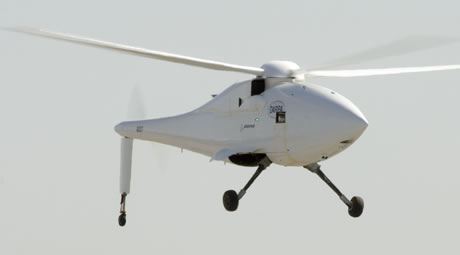The Boeing Company successfully completed the first flight of the A160T Humingbird unmanned rotorcraft June 15, 2007 from an airfield near Victorville, California. During this flight, the aircraft hovered in ground effect for about 12 minutes. Further flights are now planed proceeding with flight tests of the new engine. The new unmanned VTOL aircraft is powered by a turbine engine, replacing the piston engine used on earlier birds. The US Special Operations Command already ordered the A-160T. Some A-160s, equipped with piston engines have already been delivered said George Muellner, president, Advanced Systems, Boeing IDS. SOCOM is currently evaluating potential operational procedures, missions and tactics using few Robinson R22 helicopters converted to autonomous flying machines, surrogating the A-160 autonomous operations capability.

According to Muellner, five alternative payloads have been identified for the A-160, including EO/IR and various radars, as well as precision resupply missions currently performed with the ‘Snow-Goose’ motorized paraglider. DARPA also contracted Boeing to test fly the ‘Forrester’ foliage penetrating radar on the A-160. The aircraft will be able to carry up to 1,000 lbs of payload or fly a distance of 2,500 nautical miles, carrying 300 pounds of payload for up to 20 hours. The aircraft will use a specially designed transmission to match the improved engine.
Muellner told Defense-Update that with the new propulsion, Boeing is planning to extend the mission endurance to 24 and further to 36 hours, offering SOCOM true persistent mission capability. Hummingbird offers performance levels unique to an aircraft of its class. The platform has a rotor diameter of 36 foot, and length of 35 foot. It is configured for 4,000 – 5,000 pounds maximum takeoff weight. On persistent missions, A-160T will be able to fly at speeds up to 140 knots, operate at altitudes up to 25,000 – 30,000 ft and hover for hours at an altitude of 15,000 ft.
















